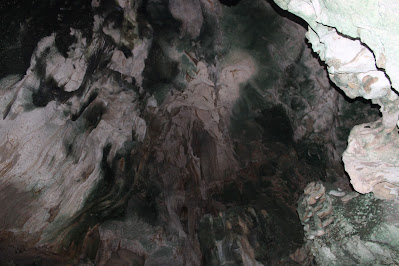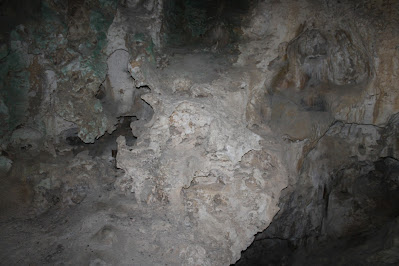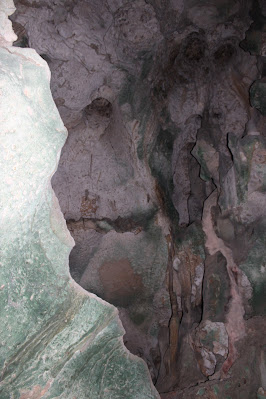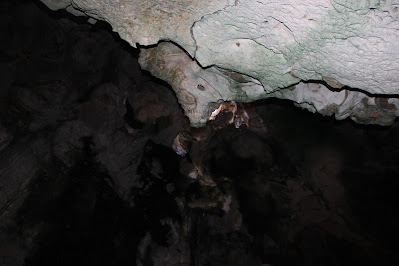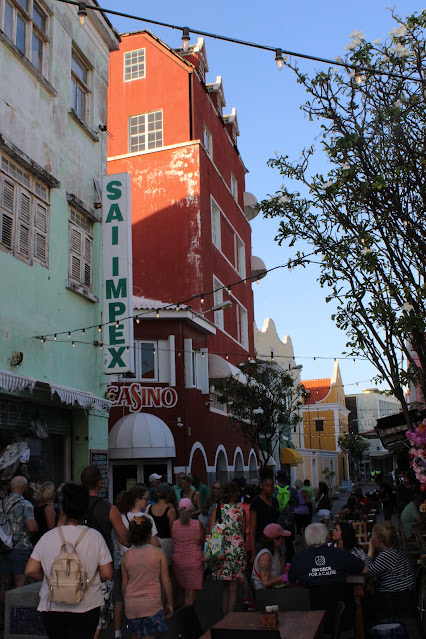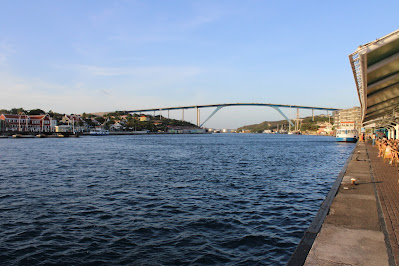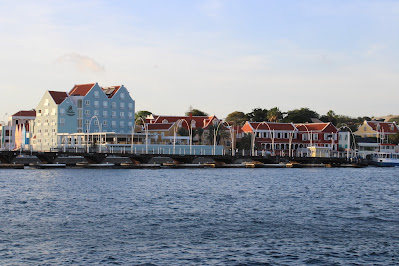Ashore at Williamstad, Curacao with DL.
Willemstad is an example of a well-preserved Dutch colonial trading settlement. Most of the original urban structure and architecture of the period 1650-1900 still stands and is the setting for a large number of monuments. The development of the city is strongly influenced by the multicultural community over three centuries. These significant elements make it a unique port-town in the Caribbean region.
The city developed on a strategic location on both sides of Sint Anna Bay on the southern coast of the island. Sint Anna Bay is a narrow gateway leading to the sheltered inland bay of Schottegat. Both are natural deep-water facilities which triggered the creation and further growth of Willemstad as a thriving trade settlement.
The inner city of Willemstad consists of four distinct historic districts, reflecting different eras of colonial town planning and development.
Starting with the construction of Fort Amsterdam in 1635 on the eastern bank of Sint Anna Bay, the town developed continuously over the following centuries.
The historic districts of Willemstad are Punda, Pietermaai and Scharloo on the eastern side of the Sint Anna Bay and Otrobanda on the western side.
Punda is the oldest part of the city and was built in the 17th century adjacent to Fort Amsterdam. It is the only part of the city that had a defense system consisting of walls and ramparts. The other three historic urban districts (Pietermaai, Otrobanda and Scharloo) date from the 18th and 19th centuries.







